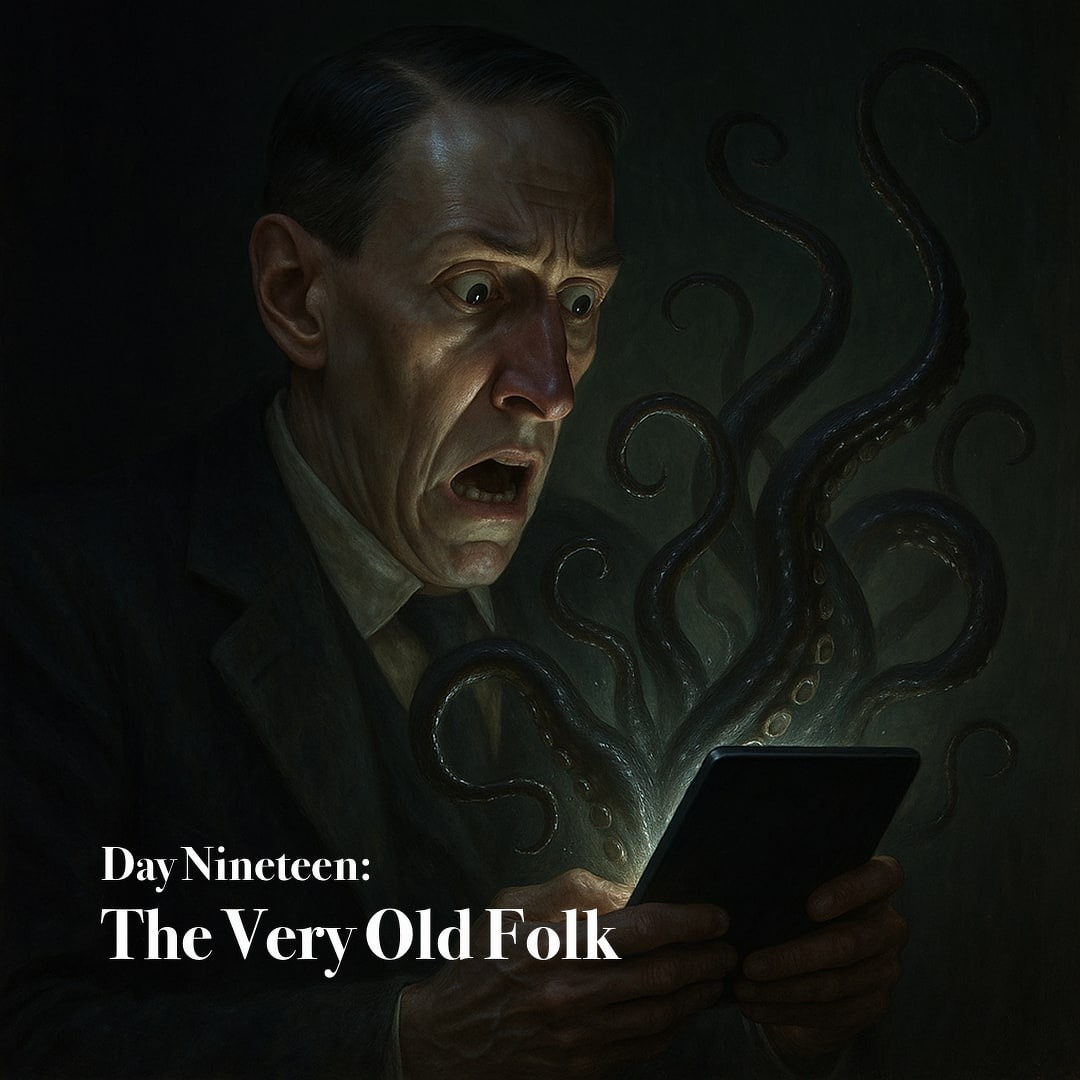The Very Old Folk

Having lately perused that singular novella, The Dream-Quest of Unknown Kadath, and the novel, The Case of Charles Dexter Ward, I fancied that a descent into one of H. P. Lovecraft’s shorter compositions might offer respite from the vast gulfs of cosmic dread his longer works disclose. Yet such solace was illusory. For in turning to that obscure relic entitled “The Very Old Folk”, I found myself ensnared once more in the black immensities of antiquity, those haunted epochs when elder powers stalked beneath alien stars. The vision of a Roman legion, proud and doomed, groping through the abominable wilds of ancient Hispania, only to brush against forces predating mankind itself, seized my soul with both wonder and despair. Alas, the tale was brief, a mere glimpse into that abyss where forgotten gods and primal cults slumber. Would that others, more daring or deranged, might venture further along the path Lovecraft traced, and illuminate what nameless horrors lurk beyond the dim frontier of his imagination.
It was, as our narrator himself confesses, no ordinary tale but a record of a dream, though what mortal sleep could conjure such hideous verisimilitude I dare not ponder. The dreamer beheld himself as a Roman official stationed in the Vascon country, near ancient Pompelo, where each passing year brought with it dread visitations from the accursed hill people. These degenerates, relics of elder stock, would descend by night to seize the innocent, bearing them away to cruel altars and obscene sabbaths beyond the reach of law or light.
A riot, born of long festering loathing, had lately sundered the fragile peace between townsfolk and mountaineers. Strange rumors whispered of vanished traders and eerie silences in the uplands. Stirred by both civic duty and nameless foreboding, the dreamer resolved to lead an armed host into those haunted hills, guided by one who had drawn his first breath beneath their shadow — a Roman by birth, yet native to that blighted soil.
What followed defies the limitations of mortal reason. As the cohort neared the unhallowed seat of the Sabbath, there came a trembling of earth and an unseen tumult in the air. Horses screamed in mindless terror. The guide — that ill-fated son of the land — fell upon his own sword, shrieking of things whispered since the founding of Pompelo. Torches guttered and went out, though no wind stirred, and the night was pierced by cries that were not wholly human. Then, from the darkness above, came a coldness deeper than winter and a thrumming vastness, like the beating of monstrous wings unseen since the elder aeons.
So ended the dream, in horror and dissolution, and the dreamer, waking with a cry, could only murmur that it had been the most vivid vision in years, drawn from subterranean gulfs of memory best left unprobed, where the oldest fears of man yet stir and mutter beneath the thin crust of the conscious mind.
“The Very Old Folk” is the title bestowed by later publishers upon a vision set down by H. P. Lovecraft in a letter of the third of November, 1927, to his confidant Donald Wandrei. Born of the fevered gulfs of dream, it was thereafter read by Frank Belknap Long, who, struck with its unearthly resonance, besought Lovecraft’s leave to weave its spectral substance into his own dark fiction. This leave was granted, and so the phantasmal fragment found new life amid the dread pages of The Horror from the Hills, where its echo of immemorial antiquity lingers still, whispering of races older than man and Sabbaths not meant for mortal remembrance.